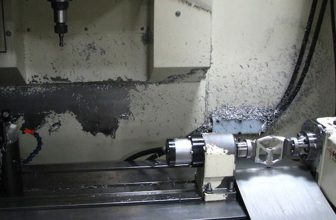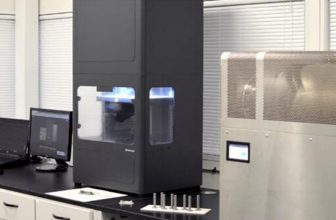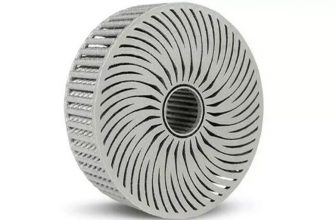
Despite the global focus on the fight against the COVID-19 virus epidemic, 3D printing technology is still continuing its industrialization process. In addition to external factors, new players continue to enter the additive manufacturing market, and acquisitions and investment and financing continue to develop throughout the industry.
AMFG has convened many 3D printing professionals and experts at its 2020 Additive Manufacturing Digital Conference. According to the sharing of experts, 3D Science Valley will join you to experience the future of 3D printing: a perspective on the new world of additive manufacturing under the epidemic. Progress and the direction of the industry’s efforts.
Combination of materials and simulation
Polymer plastics have created numerous opportunities for advanced 3D printing applications in the aerospace, medical, and automotive industries. At AMFG’s 2020 Additive Manufacturing Digital Conference, Solvay shared high-performance plastics for 3D printing and ways to unlock new technology applications.
The process of developing high-performance materials is “not easy”, which requires cooperation in all aspects. Therefore, Solvay has been committed to combining process understanding and equipment knowledge for the past three to four years, so as to be able to bring polymer materials suitable for 3D printing to the market. Today, Solvay is considered the leader in the PEEK filament market, and Solvay is also developing powder materials for powder bed melting processes (such as SLS).
Since it is important to understand how to handle materials, it is also important to understand how to make the most effective use of AM design. At this point, simulation is critical to material development. Simulation allows engineers to predict how the material will perform after printing. Simulation helps to optimize the design of parts. The ultimate goal is to improve its mechanical properties and prevent parts from malfunctioning.
Only by combining knowledge of materials, processes, and design, can 3D printing be used more reliably at different stages of the product life cycle. In this regard, e-Xstream Engineering, a simulation expert for multi-scale modeling of composite materials and structures under Hexagon, and DSM, a global performance engineering thermoplastic solution provider, have worked together to create the “First time right” goal: combining materials through simulation Features simulate the additive manufacturing process and predict the performance of parts, so as to achieve more controllable processing results in the field of plastic 3D printing.
The combination of DSM’s high-performance thermoplastic solutions and fatigue failure mechanism modeling methods, as well as the precise and convenient simulation methods of e-Xstream, gives users the opportunity to quickly iterate the modeling results in Digimat. By predicting the durability and other properties of reinforced plastic parts, users can avoid the iterative process of several months, but only a few hours, and reduce the trial and error process through simulation, thus avoiding hundreds of repeated tests. A waste of time and financial resources.
The main value of simulation includes: enabling end users to obtain lightweight products, reducing costs and shortening the time to market, while reducing material testing and prototyping requirements.
l. Software and automation are essential for realizing 3D printing mass customization applications
Mass customization allows manufacturers to cost-effectively produce dozens of batches of products, while mass production usually produces tens of millions of products. This is a challenging transition in itself, and a challenge that arises when using 3D printing to produce custom parts is how to identify very similar parts printed in one version. In this regard, advanced software and workflow automation are critical to the successful use of 3D printing for part customization. Solutions include 3D scanning, augmented reality, QR codes and MES software for data transmission and traceability.
With the domestic investment in new infrastructure such as 5G, 5G has opened the door to the transmission of high-throughput and high-density data. From the perspective of Industry 4.0, the integration of cloud into production can achieve new, smarter and more networks. An integrated manufacturing process chain. 5G can achieve reliable and real-time communication in the factory cloud system, which calls for the design of real-time computing platforms and applications for the manufacturing industry.
In this regard, the case that can be referred to is the concept of “Europe 5G Industrial Park” jointly developed by Fraunhofer IPT Fraunhofer Institute of Production Technology IPT and Swedish mobile network provider Ericsson. This is actually the first comprehensive 5G Research the network and test the application of new mobile network technology in production control and logistics in the Aachen campus.
The epidemic has not affected Fraunhofer’s progress in the slightest. The European 5G Industrial Park launched its wireless 5G network on May 12, 2020. The European 5G Industrial Park is creating a unique global ecosystem to research and develop Industry 4.0 technologies that adapt to 5G. Here, project partners focus on different application scenarios in seven sub-projects-including 5G sensors for monitoring and controlling highly complex manufacturing processes, mobile robots, logistics and multi-site production chains, distributed manufacturing control, blockchain, edge cloud Wait.
2.The four pillars from 3D printing to additive production
When 3D printing enters the field of production, it must comply with manufacturing’s strict eyeball for product quality consistency, which depends on four pillars: traceability, repeatability, accuracy and verification. Regarding traceability, a serial number is required on the part to enable the manufacturer to trace the time of manufacture of the part, the batch of the part installed, and to check the part and the parameters involved in the processing process. Regarding repeatability, it is also important to have a repeatable system. If you do not use a repeatable system to build, then you are not sure what the changes are made during the build process, which means 3D printing at this level. Only building models, not producing parts.
In this regard, internationally, Velo3D has developed a new intelligent melting powder bed metal additive manufacturing system for production needs. The system is designed to be used in production, starting from the simulation of the part processing process, to generating the processing strategy, and then through various process controls to ensure the stability and consistency of the quality in the processing of multiple parts. To ensure the normal operation of the machine, the integrity of the parts and the traceability of the construction process, the Assure quality control system developed by Velo3D faces the demand for efficiency, quality consistency and processing stability in the production field to ensure the quality of parts required for mass production. It can detect process abnormalities, mark them, and display corrective actions needed to avoid recurring errors.
In China, Anshi Asia Pacific’s new generation of 3D printing metal machine DLM-280 is based on SLM technology (selective laser melting technology) to establish a virtual (digital) printing system using digital twins and analog simulations, which can simulate the production process of DLM-280 real prototypes and make advance plans. Identify possible problems and optimize them.
Regarding accuracy, it means that a complete process chain (including post-processing) is required to meet strict tolerances. At higher speeds and more complex parts, better process control is needed to consistently produce high-quality parts while reducing post-processing or rework.
Regarding verifiability, manufacturers using additive manufacturing for production must be able to verify the build parameters. In this regard, according to market observations from 3D Science Valley, internationally, the “IDEA-Digital Engineering and Industrialization of Additive Manufacturing” project of Fraunhofer IPT’s “High-Performance Processing” department aims to solve the manufacturing process of components for additive manufacturing. Still very time-consuming and expensive pain points, for the current processing steps are largely isolated from each other and involve a lot of manual intervention. Therefore, linking the process steps in additive manufacturing has great potential to save time and reduce manufacturing costs. Fraunhofer IPT’s “High-Performance Processing” department uses the digital twin technology of the entire production line and process simulation to reduce the product cost and development and production time of the manufacturing process by approximately 50%. Most importantly, the enormous potential of the process is stimulated by effectively coupling hardware and software.
Fraunhofer IPT’s efforts are necessary. If the product is put into the manufacturing of automobiles, aerospace, military, orthotics, and prosthetics, users must be able to verify their work. If it can’t, it’s making a model. Efforts similar to Fraunhofer IPT’s IDEA project have not only brought about a verifiable manufacturing process, but also improved the connection and automation capabilities between different processes. If subsequent processing is not considered, 3D printed parts are often still unable to be delivered to customer. Due to low efficiency and highly manual post-processing management, it is easy to accumulate a large number of parts in the post-processing step. Even if the post-processing processing is completed, it usually occurs in the quality inspection station waiting for inspection, and then it is approved and approved. Ship to customers.
3.Large format 3D printing continues to mature
Large-format 3D printing has attracted much attention as a cost-effective and flexible solution for manufacturing large-scale parts. Internationally, BigRep is a company dedicated to the development of large-format plastic 3D printers. Large-format 3D printing greatly expands the range of parts suitable for 3D printing, and solves the challenges of on-demand manufacturing by providing local production capacity. This means that parts can be manufactured on demand, and delivery time can be shortened from a few weeks to a few days.
Significant progress in large-format 3D printing is not only reflected in companies like BigRep. This is particularly evident in the casting field. According to the market observation of 3d-printing-china.com , voxeljet, a supplier of high-speed large-format 3D printing equipment and services in the industrial field, is a representative enterprise for industrial manufacturing. With the help of the system, users can increase the speed from design to manufacturing, and provide manufacturing services at various stages of design, 3D printing, casting, heat treatment, processing, and testing for industrial production.
Another typical case is the large-format 3D printing technology of the Oak Ridge National Laboratory (ORNL) in the United States. In this regard, ORNL has jointly developed the world’s first 3D printing excavator with the American Equipment Manufacturing Association, the National Fluid Association and other institutions. The excavating boom is about 2.1 meters long and weighs about 181 kg. It is manufactured by ORNL’s newly developed large metal parts 3D printing equipment. The printing material is low-cost metal. The boom has been designed for hydraulic parts. Built-in channels.
4.Financing and new experiments continue to be active
Financing: Velo3D
Although most of the global manufacturing industry is half-closed during the global coronavirus epidemic, Velo3D, the developer of metal 3D printing technology, has successfully raised 28 million U.S. dollars in additional funds, and currently raises a total of 138 million U.S. dollars (nearly 1 billion yuan) ). The development of Velo3D is very rapid. Recently, they announced that they have become SpaceX’s 3D printer supplier. From 2014 to the present, they have become the supplier of leading companies in the mainstream aerospace industry. The pain points of the road to develop equipment and software solutions.
5.Financing: Arris Composites
During the April epidemic, Arris Composites, a California-based company, received US$48.5 million (approximately RMB 340 million) in Series B financing, with the goal of realizing the next-generation mass market continuous fiber composite material 3D printing production-level application.
Arris Composites realizes the mass production of high-strength and lightweight composite parts through its proprietary Additive Molding™ manufacturing technology. Through this new process, high-grade carbon fiber materials can be produced at the same speed as plastic molded products. In order to unleash the potential of the application side, Arris Composites has developed unique software tools for the enterprise’s internal design collaboration and application engineering teams. The application side can design and produce products that were impossible before through Arris Composites’ equipment and software. These products are highly integrated, stronger and lighter than metal.
New experiment: microgravity printing
On May 5, the Long March 5B (hereinafter referred to as “Chang 5B”) Yaoyi carrier rocket successfully sent my country’s new-generation manned spacecraft test ship into the intended orbit at the Wenchang Space Launch Site in Hainan. The test ship is equipped with a “composite space 3D printing system” independently developed by my country. The scientific researchers installed this “3D printer” in the return cabin of the test ship. During the flight, the system independently completed continuous fiber reinforced composite materials. The prototype was printed and verified the scientific experiment goal of 3D printing of composite materials in a microgravity environment.
Continuous fiber reinforced composite materials are currently the main materials for spacecraft structures at home and abroad. They have low density and high strength. The development of composite materials space 3D printing technology is important for the long-term operation of space stations in the future and the development of space super-large structures in orbit manufacturing. significance.





